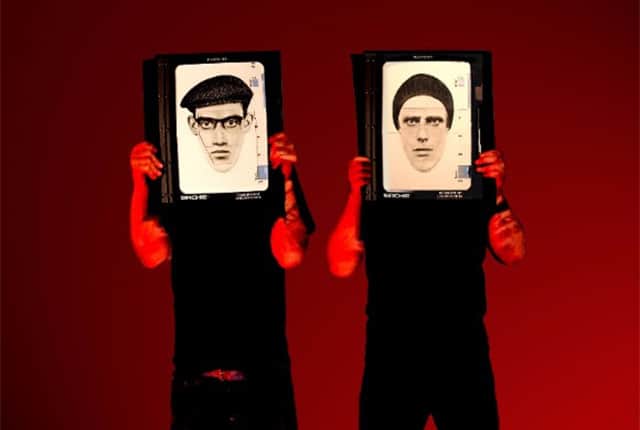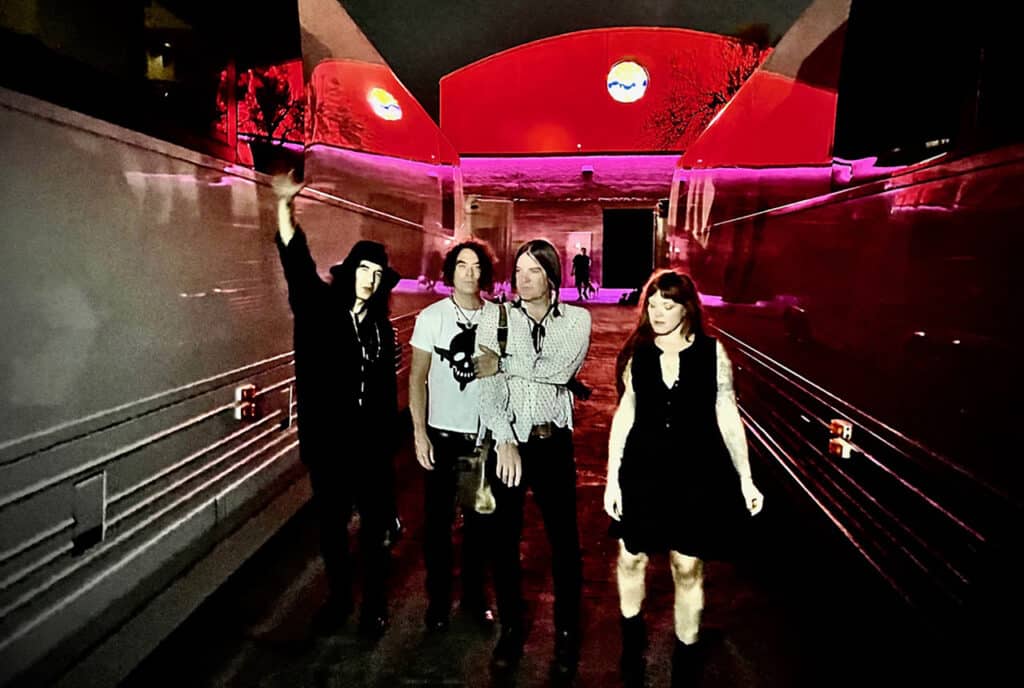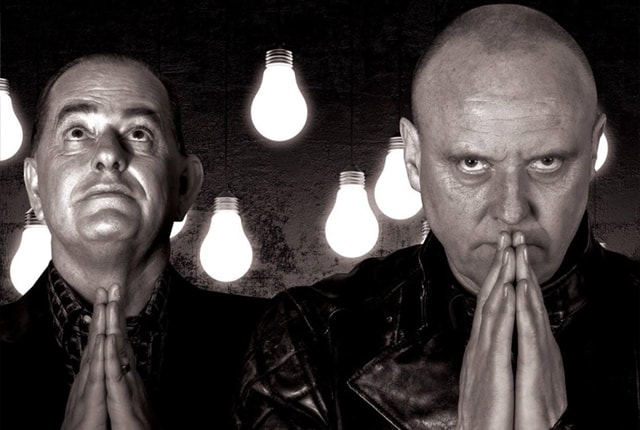Always innovative in their use of technology, Meat Beat Manifesto is back with “Impossible Star,” their first full album in 8 years.
Meat Beat Manifesto was started in England by Jack Dangers and Johnny Stephens, who released their first album “Storm the Studio” in 1989. They have never fit squarely into a particular genre, blending such influences as dub, hip-hop, industrial, techno and jazz into a unique electronic sound that has consistently mutated from album to album. The lineup has changed over the years, with the now US-based Dangers as the sole consistent member. Currently, he is collaborating with visual artist Benjamin Stokes, who brings interactive visuals to their live shows.
It’s been a while since you’ve released a Meat Beat Manifesto album. What are the reasons for the break?
Jack Dangers: “The last album would have come out in 2010. We had a couple of things that came out. ‘Test’ Ep came out a few years ago; that was a Meat Beat Manifesto/The Forger release. The main reason for the gap there was because I moved my studio. I built a new studio and had to move out for a couple of years. I was working in Sausalito on the new album, and by the time I got back here, I was not really happy with how it sounded. I had been working in the same studio for over 20 years, so moving out of that space into somewhere else didn’t work as well as I thought it would. So, once I got back in here, to the new place, I had to redo everything from scratch. That was the main reason for the delay. We did four shows last year and have more coming up.”
What impact did being away from your regular studio have?
Jack Dangers: “I’d been building up the place for the last 30 years and I couldn’t bring everything with me, so 80-85% had to go into storage. I didn’t have the capacity where we were to bring everything back into a room. It was a lot smaller. I couldn’t use all my equipment. So, that was the main loss. I wanted to get everything back into one place again. I love having everything ready to go. I run a lot of things live at the same time, more than just working on one piece of gear. I’m running a lot of the things in real time, and I wasn’t able to do that in the last place.”
Did the limitations shape the music in any positive ways?
Jack Dangers: “Out of all the stuff I did, the only thing that I actually used, which came out, was a single I did with Wolfgang Flür, the old Kraftwerk drummer. That was working with limitations, and that seemed to go in a good way. But it would have been something completely different if I’d had all my equipment available. It was the one thing out of two years that I thought was good enough to use. I’m just so used to my space. The new studio is actually exactly the same as my old one. It has the same dimensions and the same everything. It’s pointing in the same direction. It’s on the same piece of land. I was a fish out of water when I couldn’t get to all my stuff. All my records were in storage as well. I always like having them close by. Not for sampling, but just for inspiration.”
Do you tend to keep up with the latest musical and studio technology?
Jack Dangers: “There’s so much new stuff, you can’t keep up with it all. All the software, it’s impossible. So, I’m definitely more of a vintage person, but I’ve been using logic since it came out, and I’m pretty good at using that program with some Electron things like the Machine Drum and Analog Four. Even though it’s new, I like to get the hands-on approach rather than just software. So even with new stuff, I’m more apt to buy things that live and exist outside the computer, even though they’re minicomputers anyway. There’s stuff you can get for the iPhone and iPad; it’s impossible to keep up with it all. So, I just dabble with things I pick up or hear about.”
Meat Beat Manifesto put out a tour EP in 2016. Was that done alongside work on the album?
Jack Dangers: “It’s in a similar vein, but it’s different. I really like that EP, and I’m thinking of bringing it out on a 12-inch with a remix of ‘Synthesizer Test.’ I think it deserves being on vinyl, especially ‘Falling Upright.’ I really like that track. It’s one of the best things I’ve ever done, I think.”
Did you work with any other musicians on the album?
Jack Dangers: “It’s pretty much always me in the studio, from the very first record. That’s never changed. I’ve always worked with different people live. The initial Meat Beat Manifesto shows had a lot of dancers, especially in London. We had over 15 dancers at one point, but we couldn’t tour with all that. So, it’s always sort of been whittled down. I probably maxed it out in the 90s when I was playing with a drummer and more musicians on stage. At this moment, it’s just me and Ben Stokes. That’s the lineup, and that’s all it is when we play live.”
I remember seeing Meat Beat Manifesto perform at Club Babyhead in Providence, RI, with Consolidated in the 90s and being impressed with how you made electronic music really work live. Back then, you had racks of gear on stage. Does the power of laptop computers these days make things easier?
Jack Dangers: “It never gotten easier. It’s always been fraught with technical difficulties or just things not doing what they should be doing. Like the last show we did in LA: we had 8 computers, all doing different things. A lot of those were for visuals. We were running Ableton Live, which was triggering live video but also playing live video in real time. The more things we have on stage, the more things can go wrong. But it’s always been like that. We’ve always had that visual component, whether it was 3-dimensional humans or 2-dimensional screens. We use a mosquito netting in front of us to give it like a hologram effect as well.
“At that show you were talking about in Providence, that’s where I first met Emergency Broadcast Network. They were at that show. Working with them was inspiring at a video sampling level.”
They were really ahead of their time.
Jack Dangers: “It hasn’t aged, and it’s still classic.”
What determines whether a song will have vocals?
Jack Dangers: “It’s rare that it would start off with a vocal. I’ve done that with samples, though. Usually, I work on a track, and if there is something I want to say or something on my mind, I’ll start incorporating that in a lyrical way, and then work that out in a musical way. So, a lot of the time I’m doing sort of a scratch track, the basic vocal, and then working on the song, and then going back and improving the vocals or adding harmonies or vocoder. It varies.”
Does it influence your song selections for live shows?
Jack Dangers: “The live set, the way I do it is I do a straight vocal on something like ‘God OD’ or ‘Edge of No Control.’ Then, on some songs, I just use the vocoder and nothing else. So, I’m actually singing on every single track, but it just might not be a lyrical base. It could be the vocoder thing. You can do that in a musical abstract way or you can do it in a vocoder way and not just the obvious Kraftwerk robot reference; you can do many other things with it.”
With the technology allowing for so much control over things, how improvisational do you get with the Meat Beat Manifesto live shows?
Jack Dangers: “Because it’s based around Ableton Live, all the music is on different tracks, so you can mute things like that or send them to effects. That’s triggering the video, so you can keep that looping. And then the rest of the stuff we’re doing on top of that is all live, so you can improvise whatever way you want, whether it’s in a vocal way or in bringing up a bunch of video samples. Every show we do is different; one is never exactly the same as the last one. Sometimes that’s good, and sometimes it’s better.”
With the long timeframe, did you end up with more material than you needed for “Impossible Star”?
Jack Dangers: “All the other albums I’ve done in the past 30 years have had the same process and routine of doing the album and going on tour. With this one, there has been the biggest gap. Because of that, I was able to pick and choose. There are 13 tracks on there, but I had more tracks [to choose from] than I ever had before, just because of the amount of time I had. There was no record label saying it had to be done in six months so we could go out and tour. So, that was the main difference between this album and all the others. I was able to pick and choose. We’ll probably be bringing out some of the other tracks that didn’t make it onto this one next year, on different things. I’ve got another 20 tracks just sitting there. I could bring out another album in February and then another one out in March [laughs]. But it’s good to be able to pick from the cream of the crop for this one.”
Have you been involved with any other projects recently?
Jack Dangers: “I did a remix of Gary Numan a few months ago, and Clock DVA and some others. I’m still doing that.”
What Gary Numan song did you remix? What was that experience like?
Jack Dangers: “It’s a track called ‘My Name Is Ruin.’ I’ve always liked this vocal delivery. I spend quite a bit of time doing some extra vocoder stuff to back up his vocal without treading all over it. It was a blast. I always get that out of doing remixes for people I admire and grew up listening to. It’s fun being able to isolate everything out and hear the vocal.”










